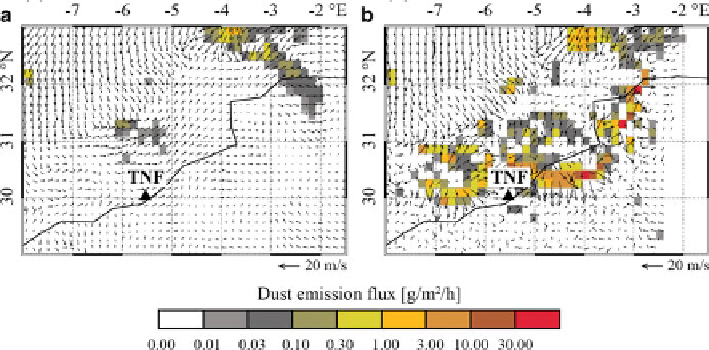Geoscience Reference
In-Depth Information
Fig. 9.3
Wind field on the first model level (
arrows
) and calculated dust emission (
colour bar
)
at 18 UTC on June 3, 2006 near Tinfou, Morocco (
marked TNF
). Results are from a regional
dust model experiment using the COSMO model over the Sahara desert with 14-km horizontal
grid resolution with parameterized convection (
a
) and 2.8-km grid resolution without convection
parameterization (
b
) (From Reinfried et al.
2009
)
et al.
2006
). The occurrence of such low-level jets, as well as their degradation
through turbulent downward mixing of momentum in the morning hours, must be
reproduced by the boundary layer scheme of the models in order to compute the
dust emission events from those processes correctly.
9.5
Deposition
Dust can be removed from the atmosphere by dry and wet deposition (for details
gravitational settling, which is the predominant removal mechanism for supermicron
dust particles, and turbulent mixing to the surface from the first atmospheric layer.
The dust deposition parameterization depends on particle size and density as well
as on relevant meteorological quantities.
Wet deposition of aerosol particles occurs by in-cloud ('rainout') and sub-cloud
('washout') removal. In some models dust is assumed to be non-hygroscopic and
therefore does not serve as cloud condensation nuclei. Rainout can be effective
during deep convective events, since cloud formation can occur through the ice
wet deposition of particles by in-cloud removal of particles and sub-cloud removal
often follow the form of a first-order decay:

Search WWH ::

Custom Search